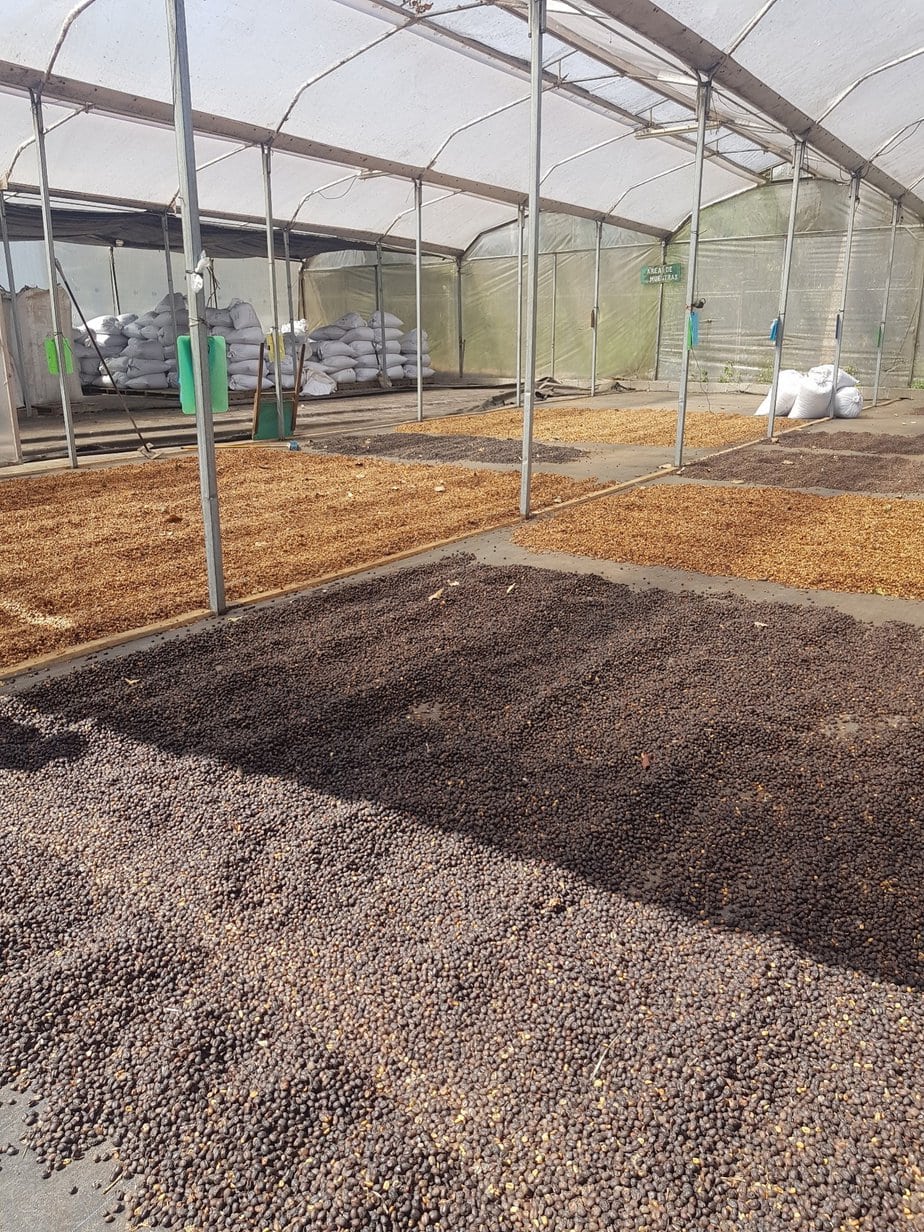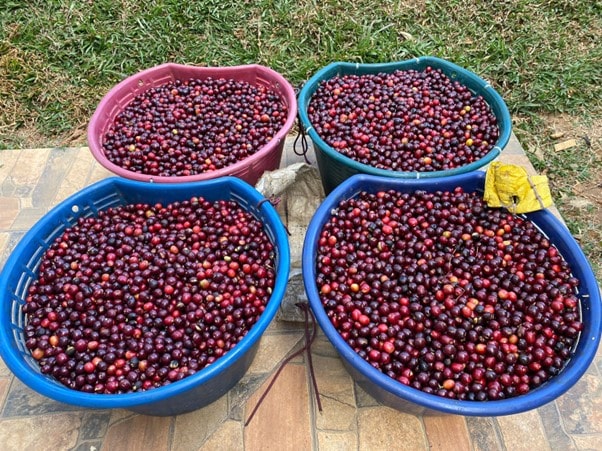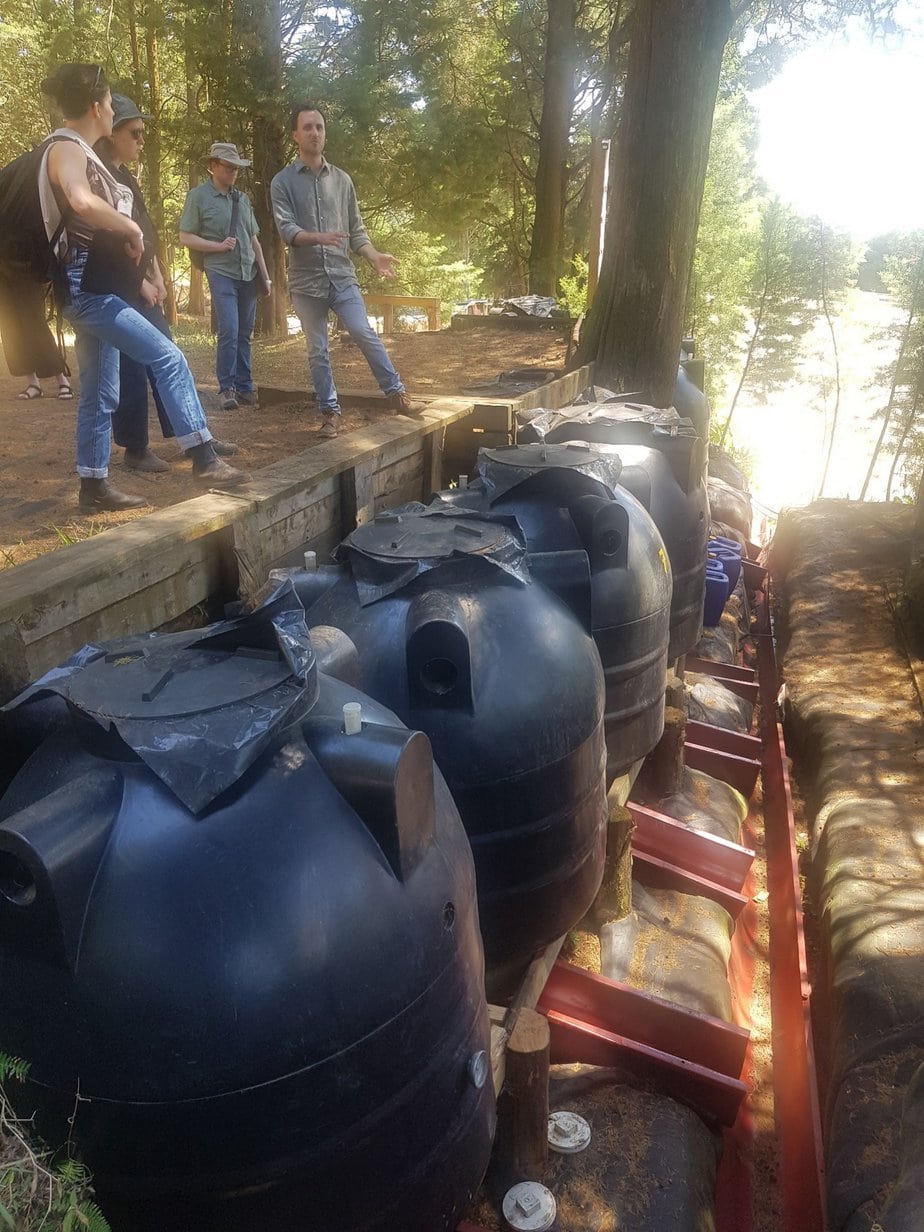Whilst our trip to Centra America was really based around meting the farmers and Nadine in Guatemala we couldn’t resist a stop off in Costa Rica, as we had heard a lot about alternative processing, most notably anaerobic fermentation. This is where coffee is in either cherry or parchment form and left to ferment in holding tanks to deprive it of oxygen and play around with the fermentation process. As you will find when you read on, this trip was amazing in the sense that there are so many variables to be played with that alter the outcome.
We met up with old family Costa Rican friends of Brock’s, staying with the parents who were in there late 80’s in a town called Palmares. Costa Ricans are warm and wonderful people and whilst Brock hadn’t caught up with them for some 20yrs they still considered him as family, cooking some wonderful meals for him and Pa – it was indeed a very local and unique time in Costa Rica. Their son, Willie, knew that Brock was well into coffee and he kindly dedicated 2 days to taking us around to a few local mills.
Café du Altura and Esteban Villabos Corrales
Only a short morning fight from Guatemala we went straight off to a dry mill called Café de Altura. This was a big scale production with work being done for the likes of Nespresso and Starbucks. However, out the back is where the real magic happened. As it so happened, our friend Wille had brought us to the man who started Anaerobic processing, Esteban Villabos Corrales. The realisation set in as Esteban told us how in 2013 he started playing around with the process. He said that he wasn’t getting any recognition for the work as coffee was coffee back then and the notes and flavours he was producing were very radical … let’s face it, they are still too radical for most consumers today even. So, he decided to put some samples into the Cup of Excellence competition, and it was only through blind cupping without reference to the processing method did he get honest evaluation and recognition for his work.
Here, out the back of the large dry mill at Café de Altura were many different experimental lots, some open on dried beds, some under cover in poly tunnels, some in full cherry and some sitting in honied form with lovely we sappy mucilage sticking all over them. It was absolute heaven …. Our eyes simply could not believe what we were seeing. Back inside we went cupping and tasted a range of amazing coffees, from washed, dried, honied and a few anaerobic. One coffee in particular blew us off the table – An anaerobic Bourbon varietal called El Diamonte which cupped like a cinnamon apple strudel. So we bought 3kg of this there and then which Brock brought back in in backpack. We will release this coffee in the second half of 2024 in 105g tins as part of our new 3Kg project.



Volcan Azul & Alejo Castro Kahle

Early the next morning we were up and travelled to a region known as West Valley, up under 2000m. When you are passing through famous regions like Naranjo and towns like Sarchi which is named after coffee varietals you know you are getting closer to heaven ! Alejo’s farm and mill produce some of Costa Rica’s finest coffees. Whilst they operate several farms they have over 1500 hectares committed to rainforest conservation. In recognising the importance of Costa Rica to the worlds Earth Biodiversity they are very proud ambassadors in this regard. We had time to do a quick cupping here of various 85+ micro lots, before we took a quick tour of his anaerobic fermentation program. Alejo’s dedication to anaerobic fermentation demonstrated the cutting edge of where this craft is now at. In essence, and like so many other aspects to coffee, we learned that there is so much more to anaerobic fermentation than just putting in a barrel and depriving it of oxygen. Alejo was currently having great success with using single varietal coffees, in plastic tanks and shade fermenting. Some of the variables he listed include:
- Method of oxygen deprivation. This can be via way of leaving them in water within the sealed tank, or just leaving them in a tank and not in water. We have since seen people using Orange Juice. Another option was to create a vacuum and remove any oxygen in the tank what so ever, whilst another method is to pump the tank with oxygen and to put it under pressure
- Alejo was currently experimenting with using different varietals, and finding that some were receiving anaerobic fermentation better than others.
- Shade, Full or part sun
- Steel or plastic tanks
- Then he talked about infusions, and gave an example of collecting local herbs and including them in the tank. This could also be compared to the coffee we are about to release by Colombian Jairo Arcila which is Dry Anaerobic infused with Lulo Fruit & Wine Yeast. The El Diamonte we bought from Esteban was fermented in stainless steel tanks with extra mucilage from other coffees.
- Agitation
- Length of fermentation is a very obvious variable, but usually around 24 to 72 hours.
- Finally the method of then drying the cherries or parchment.
Whilst we only got to spend a few hours here our knowledge of anaerobic fermentation blossomed and we definitely hope to deal directly with him and Esteban at Café de Altura in the future.
CoOp Nanajo

It took us some time to reach our final stop on this trip after lunch. This was another large dry processing Mill. We cupped a range of coffees that were all stellar 80+ coffees and a few 85+ that would suit our range and be suitable if we decided to export to Ireland. They also had a large stainless steel tank anaerobic fermentation program, which now seems par for course in CR. The problem is the price here and in general this is something endemic to Costa Rican coffee, seeing that the cost of living in CR is much higher than neighbouring countries and as such we don’t see this as a problem that will go away. In fact, we witnessed farms that had been let go or that had turned to sugar cane as they were no longer able to compete on the world stage. This would also explain the surge in value added anaerobic fermentation coffees where they command much much higher premiums.
All in all, Costa Rica completely blew our mind. We both said we could live there and just, well, drink coffee for the rest of our lives!
